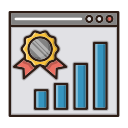
Understanding the Advantages of Being Multilingual in Coding
Being multilingual in coding refers to the ability to understand and work with multiple programming languages. This skill can dramatically enhance a programmer’s versatility, adaptability, and depth of understanding across software development. As technology evolves and projects become increasingly complex, the capacity to switch between and integrate different coding languages provides both personal and professional benefits. This page explores the multifaceted advantages of multilingualism in coding, delving into how it can elevate problem-solving abilities, open career doors, improve architectural decisions, and strengthen collaboration.
Broadening Problem-Solving Horizons
01
Understanding several programming languages exposes developers to a variety of programming paradigms, such as procedural, object-oriented, functional, or logic-based programming. Each paradigm frames problems and solutions differently, offering fresh perspectives and techniques. For instance, learning a functional language can shift one’s approach to data immutability and side-effect management, even when returning to more familiar imperative languages. This exposure increases creativity and equips developers with a richer toolkit to approach complex problems thoughtfully.
02
When a developer becomes fluent in multiple programming languages, ideas and techniques from one can often be applied creatively to another. For example, asynchronous techniques popularized in JavaScript might inspire similar approaches in languages that handle concurrency differently. This synergy allows programmers to go beyond standard patterns and invent novel approaches, improving code efficiency and maintainability while pushing the boundaries of what their primary language can do.
03
Different projects come with their own unique requirements and obstacles. A developer skilled in multiple languages can smoothly transition between distinct platforms, libraries, or systems, using the best-suited language for each task. This fluency enhances flexibility and enables faster adaptation when facing unfamiliar scenarios, making multilingual coders exceptionally effective in dynamic or rapidly-evolving projects.
Expanding Job Prospects
Employers consistently seek versatile programmers who can handle varied projects and technologies. Fluency in multiple programming languages is a distinguishing trait on resumes and during interviews, signaling adaptability and a willingness to learn. Companies operating across different tech stacks especially appreciate candidates who are ready to jump into a range of projects, broadening the pool of potential job offers and contract opportunities.
Fulfilling Specialized Roles
Many high-demand roles require a nuanced knowledge of more than one programming language. For example, full-stack development demands both back-end and front-end expertise, often in different languages. Similarly, software architects need to understand languages across the stack to design cohesive systems. Multilingual developers are uniquely positioned to fill these specialist roles and stand out among their peers, allowing for more rapid career progression.
Enhancing Code Quality and Readability
Synthesizing Best Practices
Each programming language often brings its own set of conventions and best practices. Multilingual developers have the advantage of seeing and internalizing what works well across various languages. They can adopt meaningful idioms and patterns, synthesizing them into their own coding style to produce superior, more elegant, and efficient code. This cross-language awareness raises the quality bar and promotes a more holistic view of code craftsmanship.
Improving Documentation Skills
Understanding multiple languages invariably involves engaging with a variety of documentation styles. This experience trains developers to write clearer, more comprehensive documentation themselves. They can explain concepts in ways that bridge gaps between different communities, making onboarding and collaboration smoother for teams comprised of diverse backgrounds and skills.
Preventing Common Pitfalls
Each language has its quirks and pitfalls. By encountering and overcoming bugs and inefficiencies in varied contexts, multilingual developers become alert to traps that can affect any codebase. Their experience helps them anticipate and sidestep errors, resulting in safer, more robust software. Anticipating pitfalls across multiple languages strengthens attention to detail and fosters a proactive attitude towards problem prevention.
Facilitating Integration and Interoperability

Complex software projects increasingly rely on a mixture of languages to leverage the strengths of each. For instance, a high-performance computation might be written in C++, while a web API is managed in Python or JavaScript. Multilingual developers are equipped to architect and build these hybrid systems fluently, bringing together different modules and ensuring smooth communication between components.
Accelerating Learning and Adaptability
Acquiring New Languages Faster
With each language mastered, the learning curve for successive languages shortens. Developers become adept at spotting recurring concepts—such as variable scopes, data structures, concurrency, and error handling—that translate across languages. This familiarity accelerates future learning, enabling multilingual coders to pick up new languages in response to project needs or industry trends with remarkable speed and minimal frustration.
Staying Relevant with Emerging Technologies
Technology is ever-changing, and new programming languages or frameworks constantly emerge to address novel challenges. Multilingual developers are positioned to quickly investigate, prototype, and adopt these innovations. Their ability to learn and adapt sets them apart as early adopters, and their input can steer organizations toward effective modernization while competitors lag behind.
Cultivating a Growth Mindset
The process of learning and using multiple programming languages fosters a mindset oriented toward growth and continuous improvement. Multilingual developers remain curious, open to new experiences, and steadfast in their commitment to personal development. This mindset permeates all aspects of their technical work, encouraging exploration, resilience, and a passion for lifelong learning.

Strengthening Team Collaboration
Teams often include members with backgrounds in different programming languages. A multilingual developer can act as a translator between them, ensuring terminology and architectural decisions are understood by all. This fluid communication streamlines workflows, resolves conflicts faster, and makes collaboration more effective, regardless of team makeup or project complexity.

Driving Innovation and Creativity
Encouraging Experimental Solutions
Multilingual programmers are not constrained by a single mindset. Their exposure to different languages and paradigms emboldens them to experiment with blended techniques, such as mixing functional and object-oriented patterns. By diverging from the standard practices of any one language, they can create inventive solutions that optimize performance, usability, or maintainability.
Adapting Successful Patterns
Some programming challenges are solved more elegantly in one language than another. Multilingual developers can recognize and adapt these successful patterns—such as dependency injection from Java or decorator concepts from Python—into other languages or projects. This ability to transfer and generalize good ideas cross-pollinates innovation throughout their codebases, leading to more robust and creative software.
Overcoming Mental Ruts
Relying solely on one programming language can lead to entrenched habits and mental ruts. By working with multiple languages, developers are perpetually challenged to reevaluate their assumptions and strategies. This ongoing process of adaptation keeps minds agile, open, and ready to envision new possibilities rather than settling for familiar solutions.
